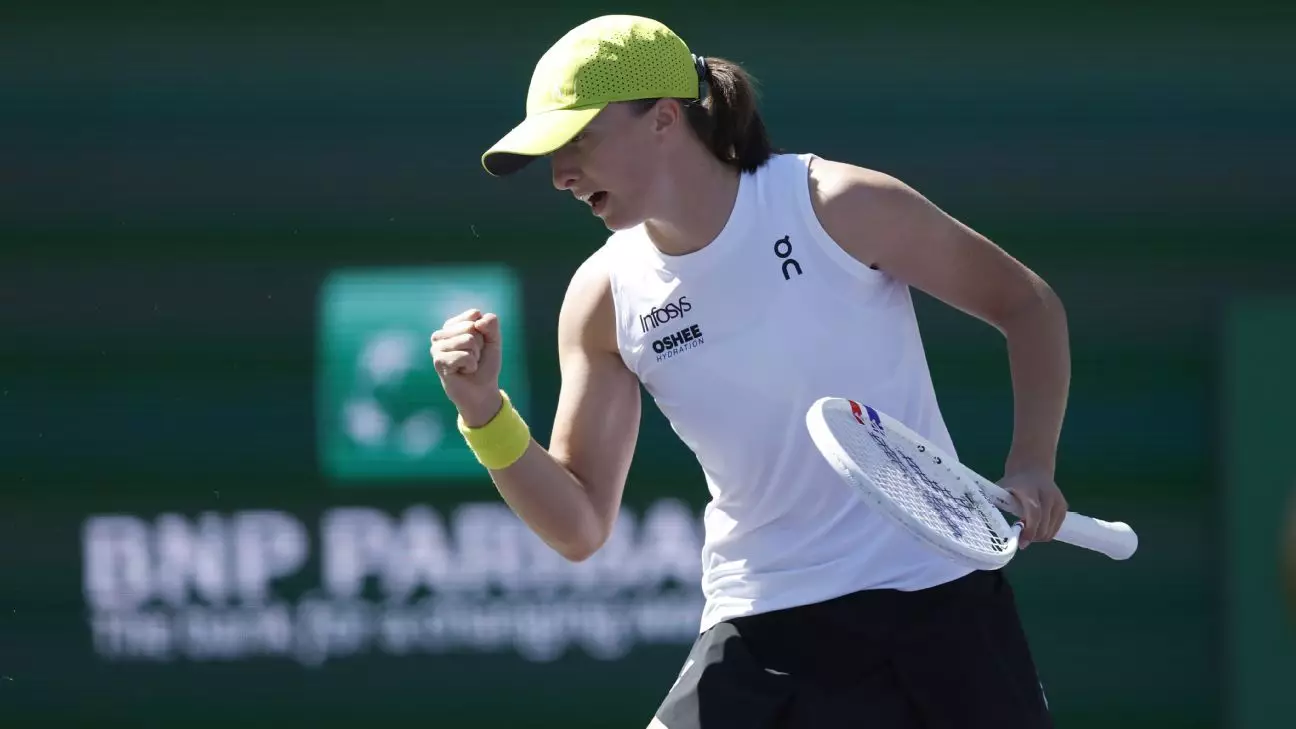In a thrilling encounter at the Madrid Open, Iga Swiatek faced off against the promising young talent Alexandra Eala, who had previously bested her just a month earlier in Miami. This match was poised to be more than just a contest of skills; it symbolized the clash of experience and youthful exuberance on an iconic stage. Swiatek, the defending champion and once the world’s top player, entered with the weight of expectation, particularly after her recent quarterfinal exit to Eala. However, the Polish powerhouse delivered a masterclass performance, not only demonstrating her capacity to rebound from defeat but also showcasing her growth as a player.
Turning the Tide: From Vulnerability to Victory
Eala started strong, breaking Swiatek’s serve early on and taking the first set with a decisive 6-4. This initial dominance seemed to echo her previous victory, perhaps causing unease among spectators who saw shadows of Swiatek’s earlier struggles. Yet, Swiatek’s resilience surfaced as the match progressed. The former world No. 1 recalibrated her strategy and psychology, displaying her seasoned prowess in the second set. She regained her composure, focusing on placing her serves more strategically to expose Eala’s weaknesses, ultimately turning the match in her favor with a 6-4, 6-2 victory.
This comeback reflected Swiatek’s mental fortitude, and it’s crucial to appreciate the tactical adjustments she made mid-game. Young players like Eala can often exhibit a raw intensity and freedom, unhindered by past failures. Yet, the poise and adaptability displayed by Swiatek serve as a reminder of the invaluable lessons seasoned pros bring to the court.
Eala’s Rising Stardom and the Future of Tennis
Alexandra Eala’s journey is noteworthy, especially as she becomes the first player from the Philippines to crack the top 100 rankings, currently sitting at No. 72. Entrenched in the rigorous training at Rafael Nadal’s academy, Eala is not just a flash in the pan; she embodies a bright future for tennis. Nevertheless, her recent struggle against Swiatek highlights a critical learning curve. The ability to maintain composure and consistency under pressure is usually what separates great players from the emerging talent. While she exhibited formidable skills by defeating established stars earlier in the Miami tournament, her inability to close out the match against Swiatek illustrates the hurdles she must overcome to establish herself among the elite.
Implications and Other Notable Performances
In the broader context of the Madrid Open, Swiatek’s victory serves as a boon for her quest to secure her first title of the season. Her previous semifinal runs signal that she remains a fierce contender, even as new talents attempt to carve their space in elite tennis. The tournament also saw other promising players like Mirra Andreeva and experienced competitors like Kei Nishikori making headlines. Nishikori’s milestone win, marking his 450th tour-level victory, speaks volumes about endurance in a sport that often emphasizes youth.
As younger players like Eala rise, they challenge the established order, offering exciting narratives that keep fans engaged and hopeful for the future of the sport. The mingling of experience and youthful ambition is creating a dynamic landscape in men’s and women’s tennis, serving to heighten anticipation for the outcomes of ongoing tournaments.


Leave a Reply